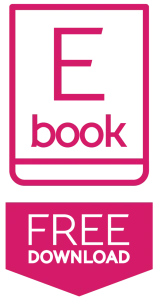Calcium’s perioperative management support platform enhances operations, patient relations
Healthcare providers, no matter the specialty, face many challenges when trying to provide the best care possible to their patients include:
- Controlling costs and improving efficiencies for the practice
- Finding and retaining high-quality staff
- Coordinating procedures with hospitals and the patient’s primary care physician
- Keeping the patient and their family engaged and informed about their health journey
These are just a few of the (many) challenges a private medical practice can face on a daily basis. These issues are well known and probably don’t come as a surprise to many providers. But some available solutions to these challenges aren’t necessarily complex or expensive.
In the perioperative environment for example, finding solutions that are both economical and keep the wellbeing of the patient top of mind are key. Whether it’s administrative management, patient services, or patient education, using digital technology tools to improve efficiencies, lower costs, and increase patient satisfaction must be a part of every surgical practice’s business management philosophy.
Technology equals service
Health care is about advancing technology to better serve patients. Medical tools and services are improving daily, but how we leverage them is even more important. Digital tools like apps and desktop-based dashboards have been created for a myriad of things from online gaming to creating and saving recipes, but applying the convenience, accessibility, and functionality of these tools to the perioperative environment and making them available to the practitioner, the patient, and their family is what sets Calcium’s platform apart.
“I do a lot of sports medicine, so my patients are typically younger, and they are tech savvy,” Dr. Adam Wait, board certified orthopedic surgeon with Midwest Orthopaedics, P.A. said. “An app works well because some of the college-age kids need reminders to do certain things in their recovery, and this app helps to lay out those things in an easy-to-use and remember function.”
Using an app/dashboard combination that provides a way for practices to manage the perioperative environment efficiently, compassionately, and effectively can increase patient care and help control practice costs.
How it can work
Calcium, a health technology company, developed an app and dashboard to help patients, providers, and businesses manage health information in a way that helps them make better health decisions. Practices like Dr. Wait’s can benefit from the administrative and patient relations functionality of the app and accompanying dashboard to improve their operations as well as patient care. Here are some ways to leverage this technology.
Administrative management
Cancellations—There are a lot of moving parts when it comes to scheduling a surgical procedure. It takes time and money to ensure everything is ready for the patient, so if they aren’t properly prepared and have to cancel, that can be a burden on the practice, the surgical center, and all staff involved. The app helps to convert the detailed pre-op checklist into a usable guide for patients to follow so there are no unnecessary cancellations.
Monitoring—A simple, effective platform can be used by medical office staff to help manage multiple patients and procedures in one effective dashboard. Staff can see whether a patient has any problems because their real-time status is monitored, and the attending physician can be notified to make any adjustments, so the patient is best prepared for surgery.
Resources—Allocating scarce staff resources is another time- and money-consuming task for a practice. Our healthcare workers are stretched now, so ensuring they have the best tools available to do their jobs to the best of their abilities is important. With the strategic use of digital technologies for scheduling, resource management, and monitoring, costs can be effectively managed to keep the practice running efficiently.
Patient services
Integration—With the dashboard mentioned above, there is a way to monitor the patient’s vital signs through their synced medical devices. Keeping track of a post-op patient’s vital signs can be a great way to catch any issues before they become serious problems. Along with tracking blood pressure and pulse, the app can be used to monitor medication use, weight, and dietary restrictions.
Engagement—Outside of the synced medical devices, the patient has to be engaged with the app and enter their information, but with the gamification and behavioral approach to the design of the app, they’re more than likely to want to be involved in their pre- and post-op care. By showing things like leaderboards and other progressions in their care, patients and their families can keep track of their successes, which is a positive psychological tool to aid in recovery.
Patient education
Information sharing—Patients are often given a lot of information during pre- and post-op briefings. It can be overwhelming. Office and surgery center staff have to make sure they are relaying the right information at the right time and that the patient understands it. With the app, the pre-op information about the procedure and the post-op recovery checklist can be included so the patient can take responsibility for their care and have the information at their fingertips.
“With the increases in the uses of technology, I see the future of how it could benefit our practice,” Dr. Wait said. “Providing, for example, my rehab protocols in the app as part of the post-op checklist to share with the physical therapist would save time and unnecessary calls if we have to send a fax, which can get lost, or if they’re in another state.”
Leveraging technology
Encouraging patients to be engaged with their health is a key component of embracing health information technology. Leveraging that technology in new ways—especially by ensuring it’s simple, effective, and even fun—goes a long way to improving health outcomes. There are also some important benefits for practices that improve their use of technology to help control costs through strategic resource allocation, improving pre-op information sharing. They help to reduce costly cancellations and demonstrate to their patients that they have their best interests in mind through using the latest tools available to ensure their perioperative experience is the best possible.
















